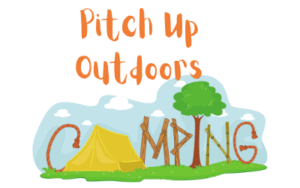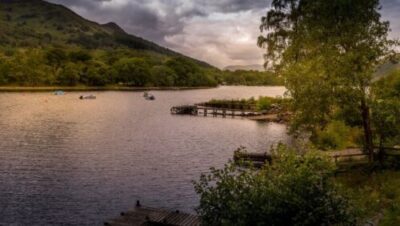This post contains affiliate links.
Scotland is known for its freedom to wild camp. Not everybody knows that there are restrictions in place for up to 4% of national park areas that require authorisation to camp from March to September.
Scottish Byelaw restricts wild camping between March and September within 4% of National Parks, including Loch Lomond and The Trossachs National Park. Permits are required to camp up to 3 nights, 1 pm to 11 am, only in the selected areas—a fine of up to £500 for breaching the law.
Scottish Access Code introduced a byelaw in March 2017 to protect the National Parks’ environment, waterways and wildlife. This is due to the increase in outdoor activities during the height of the tourist season. The byelaws affect 4% of the 720 square miles of Scottish National Parks.
Scottish Byelaws affecting wild camping
Wild camping is affected by the Scottish Byelaws as restrictions are placed on specific areas of national parks. So you cannot just turn up and camp overnight without authorisation.
It is assumed that you cannot wild camp at all in these areas, but you can. Inside the 4% restricted area, you can wild camp, providing you obtain a permit to camp for the designated areas only. There are semi-wild campsites within these areas where you stay. No permit is required.
Wild camping byelaws allow you to wild camp and remain in one place for no more than 3 nights, but you have to arrive after 1 pm and leave by 11 am on the last day. Rangers often monitor areas ensuring that no law is breached.
Who is affected by Scottish Byelaws?
The Scottish Byelaws do not affect social activities unless you want to have open fires or stay overnight.
Byelaws restrictions affect:
- Camping
- Caravaning
- Campervans
- Fishing / Angling (only if you want to stay overnight)
- Fires
Scottish wild camping restricted areas and penalties
| Period of Restriction | Affected Areas | Zones | Penalty |
|---|---|---|---|
| 1st Mar – 30th Sept | West Loch Lomond East Loch Lomond Trossachs West Trossachs North | From Lochshore to nearby road or field Additional 200m past nearest road or field | £500 Fine Reported to Procurator Fiscal |
| 1st Oct – 28th Feb | No restrictions |
Additional Byelaw restrictions
| Restrictions | Not allowed | Solution |
|---|---|---|
| Fire | Cut trees Collect firewood from the ground No open fires | Take your own wood Use a fire bowl Heat resistant base for BBQ |
| Angling | Camp overnight | Camping permit Stay in a designated campsite |
| Caravanning / Campervan | Not allowed to stay in an unauthorised area Restrictions on the movement of vehicles | Campervan or caravan permit Stay in the following locations: Three Lochs Forest Drive, Inveruglas and Firkin Point |
Scottish Loch restricted area: Wild camping restricted areas
From the 1st March to the 30th September, wild camping is restricted under the Scottish Access Code Byelaws. They are for certain areas of the national parks, allowing you to camp outside of these areas without any byelaw restrictions. Although wild camping laws still apply.
Wild camping restricted areas:
- All Lochs
- Loch Achray
- Lock Ard
- Lock Earn
- Loch Lomond
- Loch Long
- Falls of Leny
- Loch Venachar
- Loch Voil
- Three Locks Forest Drive
Scotland Byelaw Mar – Sept: Camping permits, cost, how to book

Camping Management Zones are known as permit areas. Wild camping permits need to be booked at least 4 weeks in advance due to limitations on pitches.
- £3 per night/tent
- Maximum stay 3 nights
- Arrive 1 pm
- Departure 11 am on the last day
Areas that require permits are clearly marked. If you do not have a permit to camp, you can go to another area outside the restriction zone.
To order a permit to camp, visit the Loch Lomond-Trossachs website. However, before you order your permit, you will need the following information:
- Dates
- Number of tents
- Loch Selection
- Number of adults and children
- Location
If Scotland is too far to travel to legally wild camp, have you considered semi-wild camping? There are many campsites located throughout the UK where you can legally camp. If you are unsure if you can gain the full experience of wild camping, read about semi-wild camping and find out why semi-wild camping may be more suitable. Especially if you want to take children with you to gain experience and get back to nature.
Scotland National Park: Semi-Wild informal campsites
| Camp | Location | Facilities | Pitches | Restriction | Cost |
|---|---|---|---|---|---|
| The Cabin | Loch Lubnaig Trossachs National Park | Toilets Chemical Disposal Point Car Park Tables BBQ Stand Cafe | 2 – 3m x 3m (max 2 person) 5 – 4m x 4m (max 4 person) 2 – 6m x 6m (max 6 person) | 1 Tent per pitch No Awnings No Gazebos Max 3 Nights No Groups | £8 – Adult £4 – Under 16 |
| Sallochy | Loch Lomond | Toilets Chemical Disposal Parking Drinking water Dishwashing facilities | 10 – Central Pitches 10 – Loch pitches 1 – Accessible pitch with parking | Max 3 nights 2 pm arrival – 11 am No groups No Alcohol Fire pits only | £7 – Adult – Mar – April £8 – Adult – May – Aug £7 – Adult – Sept-Oct £1 – 5yrs – 16 yrs Free – Under 5 yrs £3 – Per vehicle |
| Loch Chon | Loch Lomond | Toilets Dishwashing facilities Drinking water Car Park | 26 Pitched Woodland and open grounds | 1 Vehicle per pitch No bins – Rubbish to be taken home Max 3 nights 2 pm arrival – 11 am No groups | 1st Mar – 30 Sept £7 – Adult per night Free – Under 16s |
Before you start wild camping in Scotland, consider the time of year you will camp. It is the height of insect mania in July and August, and they will make your life hell. It can be costly to purchase all the bug sprays, which do not always work. Or you can buy nets to cover your face; however, when you are eating, you will need to uncover yourself. Using natural remedies like lemon, cloves, lavender, cucumber will help keep the midges at bay. Avoiding bites and an uncomfortable night’s sleep.
Scotland National Park: Public toilets
| Free Toilets 7 days / 24 hours | Public Toilets Charges / time restrictions | Local Businesses |
|---|---|---|
| Inveruglas | Lochearnhead | The Cabin – Loch Lubnaig |
| Firkin Point | St Fillans | Callandar Library |
| Tarbet | Callander McLaren Community Ctr | Lock Katrine – Trossachs Pier |
| Luss | Aberfoyle | Arrochar 3 Village Cafe |
| Balmaha Visitor Centre | Three Lochs Forest Drive | Tyndrum Green Valley |
| Millarrochy Bay | Sallochy Campsite | Slanj, Tarbet |
| Ben Lomond – Rowardennen Car Park | Balloch Ctr & Train station | |
| Ardentinny | ||
| Crianlarich Train Station | ||
| Lochoeilhead |
Related questions
Why can you wild camp in Scotland but not in the UK
Scotland introduced the Land Reform Act 2003, providing ‘freedom to roam’ to encourage well-being and health benefits through access to most land and waterways. The Scottish Outdoor Access code includes respect for others, the environment, and responsibility for their actions.
Scottish Outdoor Access Code: What you can’t do
Exclusions to the Scottish Outdoor Access code:
- Houses and gardens
- Near or next to schools
- Sports playing fields, when in use
- Golf courses – providing there is no interference with the sport
- Buildings or land that require payment to enter
- Land associated with the development
- Enclosed areas for livestock or crops
- Land owned by Local Authorities that are exempt for certain periods (National Parks Mar – Sept require permits to camp)
- Airfields, railways, working quarries, military-zoned areas
- Hunting, shooting or fishing
- Access to land with the intent of theft or damage
- A dog that is not under control, causing issues with livestock or the general public
Scottish Outdoor Access Code: What can you do?
| Hobbies | Family / Social | Activities / Events |
|---|---|---|
| Wildlife watching Sightseeing Painting Photography Visit historical locations | Short walks Dog walking Paddling Kite flying Picnics Playing | Cycling Mountain/rock climbing Water Sports Wild camping Hiking Horse riding Running Skiing Caving |
What to do if you need a poo when wild camping
When nature calls during a wild camping trip, following these guidelines is essential to ensure environmental responsibility.
- Bury or take it home – There are two golden rules for pooing in the wild. Either bury it or take it home with you.
- Digging a hole – Use a trowel to dig a hole approximately 15-20cm deep and 10-15cm in diameter.
- Choosing the location – Ensure the hole is dug at least 30 meters away from streams, rivers and buildings.
- Replace the Turf – After you’ve done your business, replace the turf over the hole to leave no trace of your activity.
- Dispose of toilet paper, wipes, or sanitary items:- Bag and remove any toilet paper, wipes, or sanitary items used, taking them with you to properly dispose of later.
By following these guidelines, you can maintain the natural beauty of the wilderness and minimize the environmental impact while enjoying your wild camping experience.


